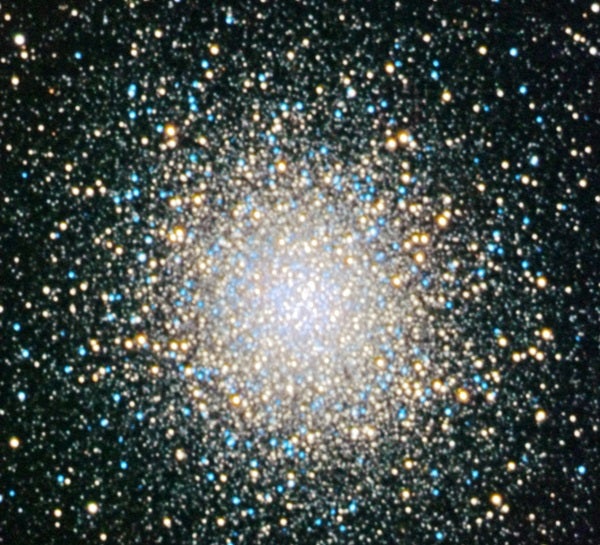The Hercules Cluster (M13) is often cited as the grandest globular cluster north of the celestial equator. Located 25,000 light- years away, it hosts more than 100,000 stars crammed into a volume of space roughly 150 light-years in diameter.
Although it is visible to the naked eye on dark, transparent nights, it seemingly went undocumented until Edmond Halley first laid eyes on it in 1714. Charles Messier subsequently added it to his famed catalog (as entry 13) a century later, but he only described it as a starless nebula since his telescopes were incapable of unlocking any stars within. That task was left to William Herschel, who also coined the term globular cluster.
The easiest way to locate M13 using either binoculars or a telescope is to draw an imaginary line between the bright stars Vega (Alpha [α] Lyrae) in Lyra, to M13’s east, and Arcturus (Alpha Boötis) in Boötes, to its west. M13 is about one-third of the way from Vega to Arcturus, along the western side of the Hercules Keystone, which is a trapezoidal asterism formed by four bright stars.
M13 is a beautiful sight through any telescope. A 4-inch scope will begin to show that there is much more here than just a nebulous glow, as the cluster’s edges begin to dissolve into myriad points. Doubling the aperture causes M13 to explode into a huge globe of tiny stars. If you have an 8-inch or larger scope, look carefully and see if you notice how the outer members form chains, or lines, radiating outward from the cluster’s core. Their appearance reminds many of the legs of a spider.
Those same larger scopes reveal an intriguing feature first discovered around 1850 by Bindon Stoney, an astronomer working for William Parsons, Earl of Rosse, at Birr Castle in Parsontown, Ireland. Near the cluster’s core, he noticed three subtle, comparatively star-poor lanes spaced about 120° apart that seemingly intersect to roughly form the letter Y. Some today refer to these as propellers.
Make sure to explore Astronomy’s full list of 101 cosmic objects you must see. New entries will be added each week throughout 2022.
To get the latest astronomical news and observing content delivered directly to your door, subscribe to Astronomy magazine today!










